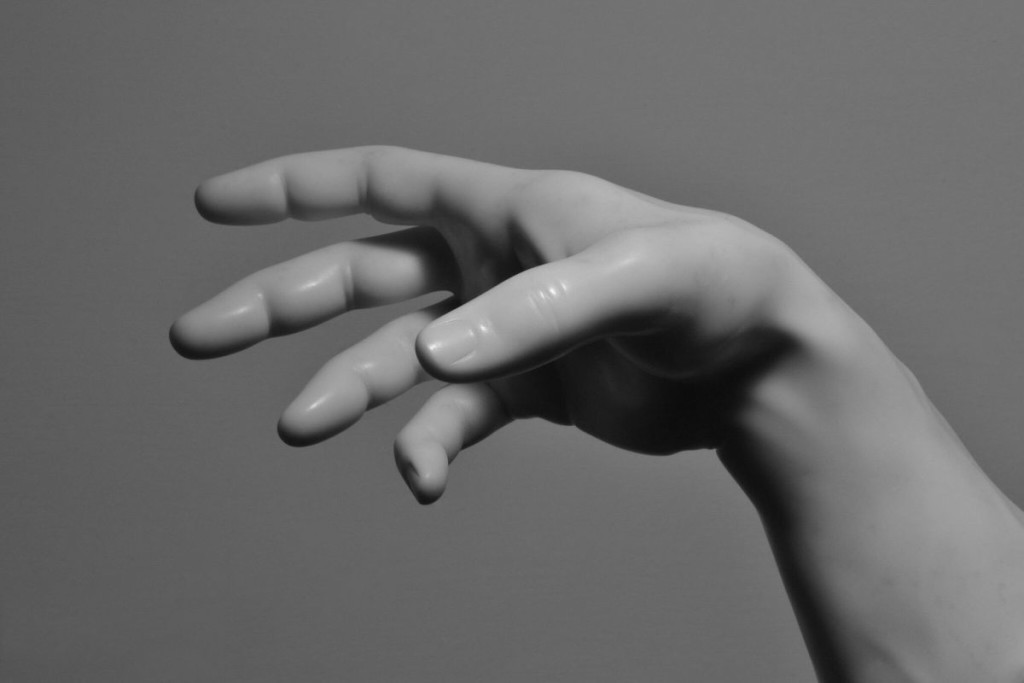Il XX secolo ha cambiato radicalmente la concezione delle arti plastiche. Nel corso di cento anni, l’oggetto-scultura ha subìto un’evoluzione che ha modificato anche la figura dell’artista scultore. Jago, invece, rovescia l’idea che la scultura d’avanguardia – e di successo – debba slegarsi dalle tecniche tradizionali o dall’insegnamento dei grandi scultori del passato.
Jago (Jacopo Cardillo) è nato con l’obiettivo di scolpire come Michelangelo. Ha perseguito questo obiettivo audacemente, formandosi come autodidatta. Ha raggiunto il successo, consacrato da diverse mostre personali e collettive, tenutesi presso i saloni più prestigiosi dell’arte contemporanea: Biennale di Venezia, MAXXI, Galleria Doria Pamphili e, in questi giorni, il Museo Carlo Bilotti di Villa Borghese tra gli altri. Ha vinto, inoltre, numerosi premi prestigiosi.
Si fregia, come il Buonarroti suo idolo, persino di una committenza papale. Nasce in questa occasione la sua opera sicuramente più conosciuta: Habemus Hominem, ritratto di papa Benedetto XVI. Peraltro, la vicenda di questo busto, data al 2009, è legata a doppio filo a quella della sua effigie. Quando il pontefice ha rinunciato al suo ufficio, il nostro scultore ha letteralmente spogliato la scultura dei paramenti papali, lasciando significativamente nuda la statua, che adesso fa bella mostra di sé nella sua esclusiva natura umana. Un esempio di come l’artista interviene sul suo statico operato per non dimenticare dell’evoluzione degli eventi nel tempo.
Jago mette in scena il proprio operato come artista attraverso tutti i canali social che la contemporaneità offre alla comunicazione, e alla narrazione.
Il catalogo dell’artista è lungi dal definirsi come espressione di un’arte intellettualistica fine a sé stessa, su committenza, dedicata all’élite culturale di punta. Una volta il successo degli artisti faceva sfoggio di sé nei saloni dei palazzi e nelle navate delle chiese. Le immagini di un’opera d’arte giravano l’Europa e il mondo attraverso riproduzioni ad acquaforte. Il suo essere contemporaneo si fonda, invece, sulla riproducibilità delle sue sculture. Sull’inserimento, dunque, di queste in un contesto social che è ormai imprescindibile dalla società e dalla vita contemporanea. Questa operazione di promozione dell’artista attraverso i canali social è lungimirante, sfacciatamente intelligente se non scaltra. Apparato Circolatorio, ad esempio, può leggersi su due piani che si intersecano necessariamente, per poterne cogliere interamente il significato. L’opera consta di trenta riproduzioni in ceramica di un cuore umano, che si succedono nello spazio. Le variazioni sono millimetriche, come fotogrammi 3D di un battito. Questa scomposizione analitica del battito del cuore sembra voler combattere con la fissità dell’oggetto-scultura la fugacità dell’evento-battito. Il binomio si risolve nel video YouTube con le fotografie di ogni singolo pezzo dell’opera, che nella dimensione video ricompongono l’anatomia figurativa di un battito cardiaco. E la sintesi è servita.



[divider]ENGLISH VERSION[/divider]
The twentieth century has radically changed the conception of the plastic arts. Over a hundred years, the sculpture-object has undergone an evolution that has also changed the figure of the sculptor artist. Jago, on the other hand, reverses the idea that avant-garde sculpture – and of success – must untie itself from traditional techniques or the teaching of the great sculptors of the past.
Jago (Jacopo Cardillo) was born with the goal of sculpting like Michelangelo. He pursued this goal boldly, forming himself as self-taught. He achieved success, consecrated by several solo and group exhibitions, held at the most prestigious exhibitions of contemporary art: the Venice Biennale, MAXXI, Galleria Doria Pamphili and, in these days, the Carlo Bilotti Museum of Villa Borghese among others. He also won numerous prestigious awards.
Like Buonarroti his idol, he even boasts of a papal commission. On this occasion his most famous work is born: Habemus Hominem, portrait of Pope Benedict XVI. Moreover, the story of this bust, given to 2009, is closely linked to that of his effigy. When the Pope gave up his office, our sculptor has literally stripped the sculpture of the papal vestments, leaving the statue significantly naked, which now stands out in its exclusive human nature. An example of how the artist intervenes on his static operated not to forget the evolution of events over time.
JAGO PUTS ITS STAFF WORKING AS AN ARTIST THROUGH ALL THE SOCIAL CHANNELS THAT CONTEMPORARY OFFERS TO COMMUNICATION, AND TO NARRATION.
The artist’s catalog is far from defining itself as an expression of an intellectual fine art in itself, on commission, dedicated to the leading cultural elite. Once the success of the artists showed off in the halls of the palaces and in the aisles of the churches. Images of a work of art revolved Europe and the world through etching reproductions. Instead, his contemporary being is based on the reproducibility of his sculptures. Therefore on the insertion, of these in a social context that is now unavoidable by society and contemporary life. This operation of promotion of the artist through social channels is forward-looking, blatantly intelligent if not clever. Circulatory apparatus, for example, can be read on two levels that necessarily intersect, to be able to grasp its full meaning. The work consists of thirty ceramic reproductions of a human heart, which succeed each other in space. The variations are millimetric, like 3D frames of a beat. This analytical decomposition of the heartbeat seems to want to fight with the fixedness of the object-sculpture the fleetingness of the event-beat. The combination is resolved in the YouTube video with photographs of every single piece of the work, which in the video dimension recompose the figurative anatomy of a heartbeat. And the synthesis is served.
Translation by Fiammetta Maceroni

